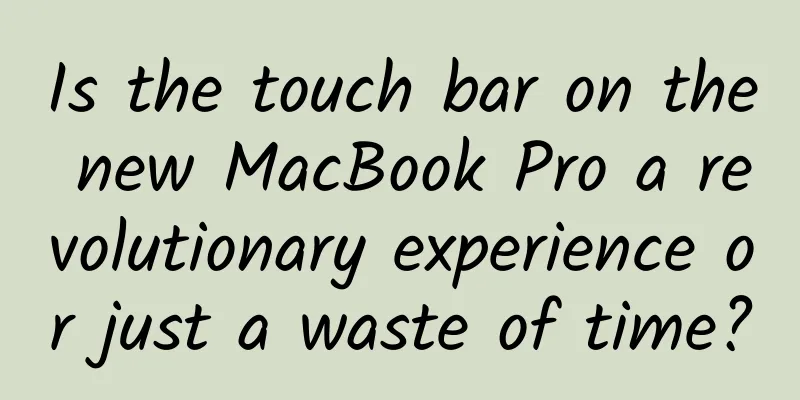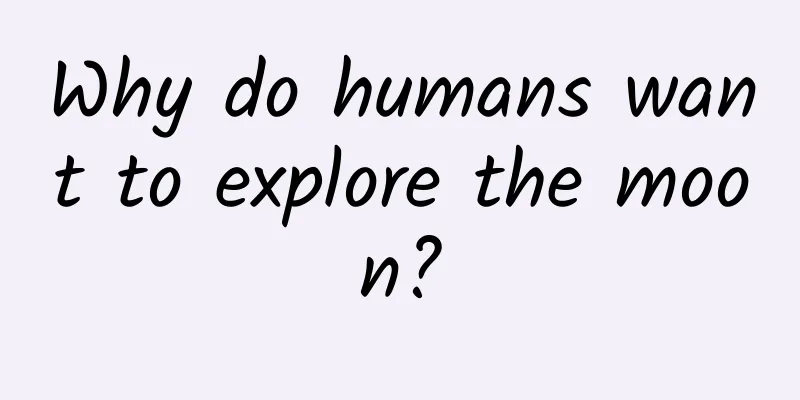Editing, algorithms and social media, content distribution divided into three parts?

|
Let me first put forward my personal conclusion: editorial (centralized human-led) distribution, algorithmic (machine-led) distribution, and social (discrete human-led) distribution each have their own advantages. Content distribution services pursue the long-term vision that distribution can reach. In order to achieve the vision, it is necessary to explore more suitable application scenarios for each type of distribution, rather than competing between the "Sword Sect" and the "Qi Sect". This section attempts to explore the scenarios in which each distribution method is suitable and their applications in content distribution systems. Editorial distribution vs algorithmic distributionFrom paper newspapers and magazines to radio and television, and then to portal websites, although the carriers of information dissemination have changed, content dissemination has always maintained a centralized distribution, with limited display spaces and a one-size-fits-all state, and the decision-making power of information dissemination has always been in the hands of editors. The advantage of editorial distribution is that professional background knowledge is used to filter and screen massive content into limited display locations. The average quality of the screened content is relatively high. However, there are bound to be deviations based on expert judgment. In order to reduce the situation of "critical but not commercial success" or individual editorial deviations, content distributors have also launched corresponding strategies. For example, traditional print media have an editorial committee voting mechanism, where multiple people judge the topic selection. Portal websites also have measures such as posting content on the homepage in different time periods, and automatically removing content from the shelves if the click rate does not meet the standard within a certain period of time. A distribution system based on machine recommendation algorithms was introduced, and the number of display slots was greatly expanded as it achieved the effect of tailoring each display to each individual. What role does the editor play when the screening manpower is insufficient to match the number of display slots? First of all, humans and machines are definitely not in opposition, otherwise, Toutiao would not have attracted so many senior practitioners with media backgrounds. My colleagues and I have praised Wu Da (then Toutiao's operations director ) sincerely more than once: "Our operations team is made up of luxurious and high-end cultural people. When I chat with Teacher Wu Da, I have to bring a dictionary orz." Editors can help the recommendation system better understand the content, and also help us better understand the creators behind the content. At the content level, the editorial and review teams are able to decide what kind of content is of low quality and should not be included and recommended by the system. The editorial and review evaluation team is like the gatekeeper of the content recommendation system. They say NO to the content that is not OK and say NO to the number makers behind the low-quality content. As the largest information and social distribution platform, Facebook also relies heavily on manual editing and review work for fact-checking and low-quality content management. On December 16, 2016, Facebook launched the Fact-Checking mechanism, which delivers excessive information reported by users to institutional journalists for judgment. If the journalist determines that the content is fake news, it will be marked as controversial. On the one hand, the front-end page will prompt users that the content may be untrue, and on the other hand, it will be controlled from the perspective of distribution. In May 2017, Zuckerberg posted that Facebook would hire another 3,000 content reviewers, bringing the total number to 7,500 after this recruitment. Censors filter inappropriate content on social media , such as pedophilia, body exposure, racial hatred, etc. In addition to Say NO, editors will also recommend Say Yes to certain content. Taking the push scenario as an example, as a strong interruption scenario, the pushed content needs to be carefully screened to ensure that it is worthwhile to interrupt the user. On the news client, we always emphasize screening out "Breaking News". When important news occurs, editors must be on duty 24 hours a day to verify the authenticity, determine the push scope and push level, just to not miss any content worthy of user attention, so that users can get the latest news more accurately and quickly. In this process, technology can help build news candidate sets more quickly, such as tracking social media, tracking releases on key websites (such as the Meteorological Bureau, Transportation Bureau), etc., but humans are the ones who make the final decision. Of course, in order to ensure the scalability and effectiveness of the system, we hope to avoid direct human intervention in daily recommendations, such as adjusting the weight of content, intervening in the display volume, etc. However, not intervening directly does not mean absence. Editors are always playing a "corrective" role. When they find that content that they subjectively think is good does not receive the necessary number of recommendations, or when they find that content that they subjectively think is bad receives too many recommendations, they will give feedback on products and technologies. In this case, product, technology, and editing ( content operations ) will sit down and discuss: First, whether this is a problem; if so, whether it is a frequent problem, so as to determine whether it should be solved and what the priority is; second, to explore more systematic solutions so that this type of problem, rather than this one, can be solved more systematically. At the creator system level. We often say that we need to have a user perspective when making products. As a platform, you are facing hundreds of millions of users while also facing tens of thousands of authors. Authors are also users of content distribution systems. Editors will better understand the context of creators, become spokespersons for creators and their works, and influence the iteration of the system. At the same time, they can also convey the platform's rules in a way that is more understandable to creators, helping creators at different stages to grow better on the platform. By the way, I found that there was a book "Python Data Analysis " on Teacher Wu Da's desk: cultured people understand technology, no one can stop them, haha. Social distribution vs algorithmic distributionAs Facebook, Weibo, and WeChat cover more and more users, content distribution has gradually become decentralized: everyone can create content and grow into their own media , and everyone can spread content through commenting and forwarding through social relationships. The right to disseminate information has been transferred from traditional elite editors to every ordinary audience, which is equivalent to everyone becoming an editor and the center of content distribution. Social distribution has made the dissemination of information “different for different people” for the first time. Each user has personalized content consumption. In 2010, Facebook homepage visits exceeded Google visits, which means that "social distribution" has become the mainstream distribution method. According to a previous Pew Research Center survey, 62% of American adults get news through social media, 18% are highly dependent on the platform, and 44% read news through Facebook. Of course, social distribution also brings new problems: On the one hand, after entering the stable period, a new monopoly has emerged in traffic : some big Vs , because they have a large number of fans and maintain a high frequency of posting, actually control the platform's traffic distribution rights. For example, most of the traffic on Weibo is occupied by marketing accounts and big Vs, and the cost for new content producers to obtain traffic has increased dramatically. On the other hand, with the continuous expansion of social relationships, Weibo and WeChat have become online business cards. Users are paying attention to more and more sources, and the quality of content based on social distribution has gradually declined. The popularity of health articles, micro-business, and baby-sharing in the circle of friends is the best example. Social distribution saves people from information scarcity, but it also brings the problem of information overload. In order to optimize users' information consumption experience, Facebook was the first to apply algorithms for sorting in its own News Feed. Facebook's original sorting method is called the Edge Rank Algorithm. The core calculation formula of the algorithm is: E = uwd:
It is not difficult to see from the above formula that the introduction of intimacy and actions has greatly suppressed the situation of big Vs and marketing accounts flooding the screen. Previously, once a corporate account gained fans, it was equivalent to obtaining stable advertising space , and all new advertisements were displayed in the information flow of these fans at almost zero cost. But after that, fans without interaction will just remain as numbers on the page, and corporate accounts must also make efforts to maintain their fan base. In the days that followed, Facebook worked to improve the sorting algorithm through machine learning. In addition to the original three EdgeRank factors, it continued to add new features and sorting methods, such as Story Bump ing (the system makes a secondary judgment on the information missed by the user. If it is judged to be important, it will skip the chronological order and display it at the top), Last Actor (the system adjusts the weight of information sorting based on the 50 people with whom the user has frequently interacted recently, amplifying the impact of short-term interests), etc. Coincidentally, in China, Weibo has gradually realized the problem of its traffic being held hostage by influencers and marketing accounts, and has begun to increasingly apply recommendation algorithms to information flows, adjusting the original time sorting to intelligent sorting in order to control problems such as screen swiping and advertising proliferation, and optimize the user experience. If you have paid attention to the distribution of WeChat Moments , you will notice that some content suspected of being over-spread (micro-business advertisements, forwarding and collecting likes) is filtered out by WeChat. Weibo and Facebook use follow-up relationships as screening factors and users' click and comment behaviors as weighting factors, and perform algorithmic sorting on the candidate set of "follow-up relationship output content". In comparison, Toutiao also weakens the attention relationship as a weighting factor, thereby obtaining a wider range of candidate sets (the user is equivalent to following all Toutiao accounts on Toutiao), and the sorting based on this can have higher efficiency matching and better scalability. What is the end of algorithmic distribution?From a certain perspective, algorithm distribution may be called the ultimate solution. Why do I say so? Because the recommendation algorithm is a basket, anything can be put into it. It is based on the abstraction and modeling of our understanding of the real world, and all the factors we care about (editorial distribution, social distribution) can be converted into reference factors for algorithmic recommendations. If we simplify this problem and converge the recommendation factors into three parts: editorial factors, social factors, and model factors, then the score of a content in the system can be expressed as the following formula: Content score = a editorial factor + b social factor + c* model factor a, b, c are the weights of the three factors respectively. If we reset the weight of one factor to 1 and the weights of other factors to 0, then algorithmic distribution can be equivalent to editorial distribution or social distribution. The adjustment of various weights is entirely determined by the platform's value orientation. Taking FaceBook as an example, it believes that the life record content from real friends is more important. During the distribution process, it will strengthen the weight of the life record content from real friends, weaken the weight of their forwarded content, and further weaken the weight of the content released by the media, and so on. In fact, all kinds of content distribution products we are familiar with, regardless of their starting points, have now embarked on a path of multi-element integration: relying on centralized editorial guidance and intervention, relying on decentralized user production and dissemination, and applying machine learning to improve efficiency. The new version of Weibo also places popular channels next to the followed channels, providing a content recommendation service that does not rely on subscription relationships. WeChat has also launched the laboratory function "Take a Look". Audience members who are obsessed with the battle between the Qi Sect and the Sword Sect should just disperse. The author of this article @闫泽华 is compiled and published by (Qinggua Media). Please indicate the author information and source when reprinting! Product promotion services: APP promotion services, information flow advertising, advertising platform |
Recommend
Look, this is the back of the moon! Five years ago today, Chang'e 4 successfully landed on the moon
At 10:26 on January 3, 2019, my country's Cha...
How to effectively increase user growth?
" User growth is a term that everyone in the...
Too difficult to copy? Why don’t new Android flagships have 3D Touch?
As early as last fall, there were multiple reports...
How to make money: Douyin commercial IP sailing practical course 1.0, 1400+ crew practical summary and verification, start monetizing from the first fan
How to make money Douyin commercial IP sailing pr...
Guangzhou recipe mini program function, how much does it cost to develop a home cooking mini program?
As those born in the 1990s and 2000s have started ...
The first test of Coocaa U55 4K TV is about cost-effectiveness
For many people, after a busy day, staying at hom...
Why do vinegar and baking soda clean stains?
I don't know when the seasonings on the kitch...
How to make money by starting a short video business? How to make money through short video live streaming?
Many people want to start a business with short v...
Why is the iPhone SE considered Apple's weakest link?
For the iPhone SE released earlier this year, App...
What does it mean when publishing Tik Tok works and being restricted? Under what circumstances will the traffic of Tik Tok works be restricted?
Some friends have opened Douyin stores on the Dou...
What is the abnormal weather phenomenon this year 2022? Why is it so abnormal? Specifically these are the three reasons!
Recently, the weather in many parts of my country...
Fifteen measures for safe production! What are the specific measures? Why were the fifteen measures introduced? Details attached!
On April 10, 2022, the State Council formulated an...
TV games can also be played like this. LeTV game console brings arcade pleasure
Speaking of fighting games, if you tell me that y...
Girl, let's learn programming together
When we mention the word "programmer", ...
A comprehensive summary of App promotion channels in 2019!
Performance Marketing We define any promotion tha...





![[Popular Science on Epidemic Prevention] You need to know these 8 facts about asymptomatic infections](/upload/images/67f2a77811b0c.webp)



